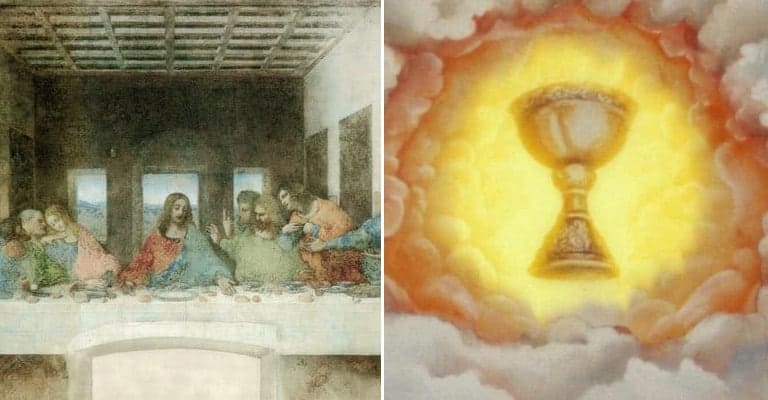The Holy Grail, a Christian artifact believed to have some mystical powers, has long been at the center of many stories. Cultural lore, particularly in Europe but also in the Americas and even Asia and Africa, is rife with stories about the object and stories of people who embarked on dangerous quests to find it. Perhaps the most recent of those quests was the one undertaken by the fictional characters Robert Langdon, Sophie Neveu, and Leigh Teabing in The Da Vinci Code.
Each generation seems to bring a renewed fervor for the Holy Grail, as well as a new interpretation of what the grail is and the legends behind it. Consider Monty Python and the Holy Grail, a funny account of a grail search that preceded the more serious Indiana Jones and the Last Crusade. Plenty of other books, movies, and documentaries have garnered public attention as they have tried to bring to light some of the mysteries surrounding the Holy Grail.

16. There’s More Than One Holy Grail
When people talk about the Holy Grail, they tend to believe that or at least speak as if, they are talking about one particular artifact. However, there are numerous ideas of what the Holy Grail even is. If you ask Dan Brown or fans of The Da Vinci Code, you will hear that the grail is not an object but the royal bloodline of Jesus Christ (a claim that has been widely debunked by scholars). Other pop culture references – notably Monty Python and the Holy Grail and Indiana Jones and the Last Crusade as well as numerous other shows, movies, and novels- don’t second-guess the idea that the grail is a cup.
Even among those who believe that the Holy Grail is a cup, there are different ideas as to which cup exactly it is. Grail enthusiasts who want to begin their own “quests for the Holy Grail” must start their journeys by determining what exactly the grail that they are referring to even is. Only then can they begin their search by narrowing down the number of legends and learning which, if any, may have historical merit and therefore contain clues as to where the grail is if it exists at all.

